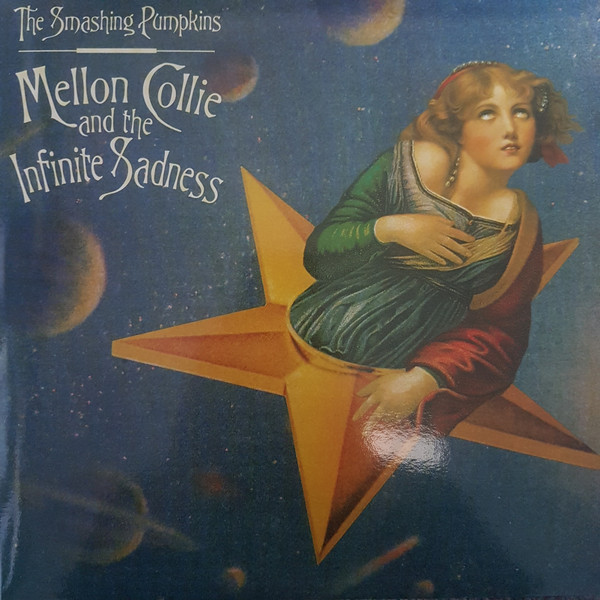Mellon Collie And The Infinite Sadness by The Smashing Pumpkins

By every conceivable metric—album sales, chart rankings, Grammy Award nominations, sheer running time—<i>Mellon Collie and the Infinite Sadness</i> was the biggest album of The Smashing Pumpkins’ career. But those stats don’t fully convey the sheer aesthetic vastness and outsized passion of this two-disc, two-hour, 28-track colossus. With the Pumpkins’ 1993 predecessor, <i>Siamese Dream</i>, band brain trust Billy Corgan had already proven he possessed a widescreen, auterist vision that set him apart from his alt-rock cohorts. But with <i>Mellon Collie</i>, he entered the rarefied headspace previously occupied by Pete Townshend circa <i>Tommy</i> or Roger Waters on <i>The Wall</i>, exhibiting a sense of self-belief that borders on supernatural possession. On <i>Mellon Collie</i>, every aspect of the Pumpkins’ sound is pushed to the extreme: The signature grungy riffs are hardened into mutant metal (“Zero”, “Tales of a Scorched Earth”); the ballads plumb new depths of tenderness (“Thirty-Three”); the orchestral flourishes hit with cathedral-shaking force (“Tonight, Tonight”); and the latent proggy affinities blossom into unabashed Rush homage (“Porcelina of the Vast Oceans”). But even as he was positioning himself among the gods of classic rock, Corgan could still tune into the emotional wavelength of us mortals and misfits: At a moment when teen angst was still paying off well for many, no other song of the era articulated the frustration and futility of raging against the machine as bluntly as “Bullet With Butterfly Wings”. At the same time, Corgan could guilelessly conjure the carefree promise of youth on the iridescent “1979”, a New Wave daydream soundtracked by motorik rhythm and threaded with hypnotic guitar textures. In its fusion of mosh-pit aggression and high-art ambition, <i>Mellon Collie</i> both marks the apex of the early-1990s alternative revolution and, by extension, anticipates its retreat from the center of popular culture over the back half of the decade. Knowing full well that <i>Mellon Collie</i> was all but impossible to top, Corgan would push the Pumpkins in the completely opposite direction for 1998’s <i>Adore</i>, trading in pomp-rock fantasias for beat-driven synth-pop. But in hindsight, that move seems less like a knee-jerk reaction to <i>Mellon Collie</i>’s unabashed excess than a mission-accomplished affirmation of its chief purpose: To explode the possibilities of what a guitar-powered alt-rock band could achieve.
